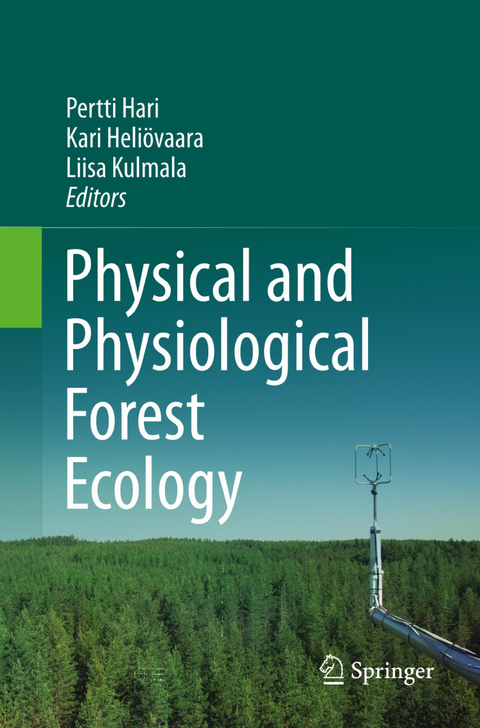
Physical and Physiological Forest Ecology
Seiten
2015
Springer (Verlag)
978-94-017-8261-6 (ISBN)
Springer (Verlag)
978-94-017-8261-6 (ISBN)
This book introduces a holistic synthesis of carbon and nitrogen fluxes in forest ecosystems from cell to stand level during the lifetime of trees. Conservation of mass and energy allow the construction of dynamic models of carbon and nitrogen fluxes and pools at various levels in the hierarchy of forest ecosystems.
This book introduces a holistic synthesis of carbon and nitrogen fluxes in forest ecosystems from cell to stand level during the lifetime of trees. Establishing that metabolism and physical phenomena give rise to concentration, pressure and temperature differences that generate the material and energy fluxes between living organisms and their environment. The editors and authors utilize physiological, physical and anatomical background information to formulate theoretical ideas dealing with the effects of the environment and the state of enzymes, membrane pumps and pigments on metabolism. The emergent properties play an important role in the transitions from detailed to more aggregate levels in the ecosystem. Conservation of mass and energy allow the construction of dynamic models of carbon and nitrogen fluxes and pools at various levels in the hierarchy of forest ecosystems.
This book introduces a holistic synthesis of carbon and nitrogen fluxes in forest ecosystems from cell to stand level during the lifetime of trees. Establishing that metabolism and physical phenomena give rise to concentration, pressure and temperature differences that generate the material and energy fluxes between living organisms and their environment. The editors and authors utilize physiological, physical and anatomical background information to formulate theoretical ideas dealing with the effects of the environment and the state of enzymes, membrane pumps and pigments on metabolism. The emergent properties play an important role in the transitions from detailed to more aggregate levels in the ecosystem. Conservation of mass and energy allow the construction of dynamic models of carbon and nitrogen fluxes and pools at various levels in the hierarchy of forest ecosystems.
Contents.- 1. Introduction to Physical, Physiological and Causal Forest Ecology.- 2. The Approach to Construct and Test the Theory of Forest Ecology.- 3. Environmental Factors.- 4. Processes in Living Structures.- 5. Fluxes of Carbon, Water and Nutrients.- 6. Structural Regularities in Trees.-7. Dynamics of Carbon and Nitrogen Fluxes and Pools in Forest Ecosystem.- 8. How to Utilize The Knowledge of Causal Responses? .- 9 Station for Measuring Ecosystem-Atmosphere Relations – SMEAR.- 10. The Physical and Physiological Theory of Forest Ecology and its Evaluation.- Index.
| Erscheint lt. Verlag | 29.1.2015 |
|---|---|
| Zusatzinfo | XII, 536 p. |
| Verlagsort | Dordrecht |
| Sprache | englisch |
| Maße | 155 x 235 mm |
| Themenwelt | Schulbuch / Wörterbuch |
| Naturwissenschaften ► Biologie ► Ökologie / Naturschutz | |
| Naturwissenschaften ► Biologie ► Zoologie | |
| Naturwissenschaften ► Geowissenschaften ► Geografie / Kartografie | |
| Naturwissenschaften ► Geowissenschaften ► Geologie | |
| Naturwissenschaften ► Geowissenschaften ► Meteorologie / Klimatologie | |
| Naturwissenschaften ► Physik / Astronomie ► Angewandte Physik | |
| Technik ► Umwelttechnik / Biotechnologie | |
| ISBN-10 | 94-017-8261-X / 940178261X |
| ISBN-13 | 978-94-017-8261-6 / 9789401782616 |
| Zustand | Neuware |
| Haben Sie eine Frage zum Produkt? |
Mehr entdecken
aus dem Bereich
aus dem Bereich


